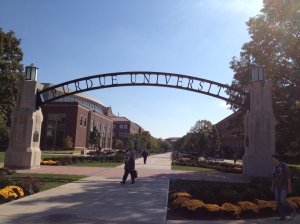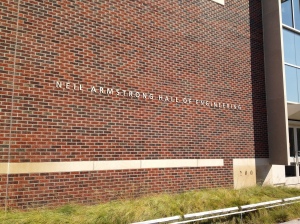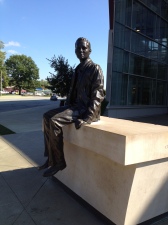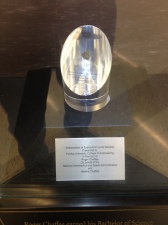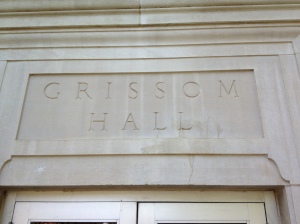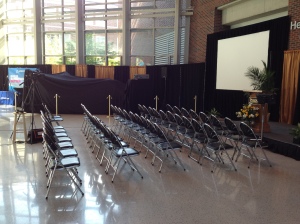As you know, I was the victim of patent abuse last year. Sometimes I feel bad to continue harping on it, but frankly it was the single biggest challenge my company had to endure in its first decade of existence. It consumed the vast majority of my time, energy, emotions and cash in 2014, and that’s why it’s so important. I want to give a quick “thank you” to all of you who have given me moral support, and I thank you also for not unfriending me on Facebook as I continue to share updates on the story.
I’m writing this as much for myself as for others to read. It’s been an amazing experience filled with highs and lows. My wife, Janine, says that this should be the second book I write! For now, this entry will serve to capture some of my memories about my trip to DC to meet with members of Congress to share my story as a patent abuse victim.
Being sued last year created an immediate stigma and sense of shame, like I had done something wrong. Fact is, I KNEW I had never done anything wrong. I had simply come up with an idea to take photos at race events, and I had built a website where you could search for those photos. There was never any copying or stealing involved. A big part of me wanted to hide and lay low. I didn’t want anyone to know this tawdry situation I had been drawn into. But despite this desire, my wife and I decided to go public to try to raise funds for what we knew would be an expensive legal defense. So I called up some TV stations and I built a website, www.endpatentabuse.com.
Donations trickled in, but the decision to go public yielded another benefit. Two different organizations attempting to coordinate support for patent reform contacted me in February of 2015, United for Patent Reform and Application Developers Alliance. They asked me to do certain activities like write an Op-Ed piece for the Hartford Courant, speak with my congressman, appear in a video which would be submitted to the House Judiciary Committee, etc. As a fierce advocate for sorely-needed patent reform, I jumped at the opportunity.
Application Developers Alliance (I’ll abbreviate as ADA) coordinated an event they called a “fly-in” where a number of patent victims would come to DC and meet with Congressional representatives. I took the train from New Haven down to DC, where the first part of my adventure begins.
Walking on the train to store my bag, I passed an elderly Asian gentleman. His face looked vaguely familiar. (I’m so bad with faces.) Returning to my seat, it dawned on me. It was George Takei of Star Trek fame. I was almost certain. I’ve never been one to seek out celebrities for autographs or introductions. But here we were on a four hour train to DC, and I had a potentially captive celebrity audience. So I mustered up the courage and went back and said hi. I kept it brief, always respectful of others’ time and privacy. I introduced myself, shook his hand, said I was a big fan of his work on Star Trek. I asked if he was going to DC because of the impending Supreme Court Ruling on gay marriage. He said he was going to the State Dinner at the White House. Impressive! I told him I was impressed with his efforts and success on social media and he gave me a big smile and a thumbs up. I turned to his partner Brad and and George introduced us. I gave him a big smile and handshake. I excused myself by saying “I don’t mean to bother you.” George said “Not at all.” He was a very gracious person.
On another side note, when the train stopped in Baltimore, Anderson Cooper passed me on the way out of the train. Two celebrities in one day. Nice!
The morning of April 29 brought beautiful weather. Perfect blue skies and blossoming dogwoods were the backdrop as I stepped out of the car on Capitol Hill. The Capitol dome was shrouded in scaffolding, but still impressive. I passed through security at the Rayburn House Office Building and saw inside the halls of Congress for the first time. The building was nice, but not luxurious, with plain wide halls that extended for hundreds of yards. My first stop was Mike Bishop – Republican from Michigan. As would happen for the remainder of the day, all of my individual meetings were with Congressional staffers, not the representatives themselves. The ADA members who set up these meetings assured me that speaking to the staffers was every bit as important as meeting with the members of Congress themselves. For one, the staffers were able to spend more time with me (an average of 15-20 minutes), whereas I would be lucky to get 3-5 minutes with an actual Congressman.
I won’t attempt to rehash every meeting individually. But in general, the staff members were very interested in hearing my story. I got several minutes to speak about my story, followed by some questions from the staffer, and then a brief general discussion about the pending legislation. I was surprised at how small the offices were. Sometimes we were crammed around a small table adjacent to several cubicles.
Next, I met with GOP Conference Senior Advisor Rebecca Mark. She is a former executive it MySpace and Microsoft. Again I shared my story along with another ADA member. She agreed about the general need for patent reform, said there was a lot of support among Republicans, though some members favored less government regulation.
After that meeting, we walked down Capitol Hill to the O’Neill House Office Building where six of us ADA members met with Vishal Amin. Vishal actually wrote HR-9, the Innovation Act, sponsored by Bob Goodlatte (R-VA). It was 30 minutes of preaching to the converted as we told our stories to the author of House Bill. He said more stories like ours helped those members of congress who might be “on the fence” to come over to our side. He said the opposition to patent reform is extremely vocal and well-organized and encouraged us to continue getting the word out.
Several members of the Alliance escorted group members as we separated and came back together throughout the day for different meetings. Each of them was professional and very knowledgeable. One of them named Geoff, who looked like a young George Michael, would point out Congressman and Senators as we walked through the halls. “That’s so-and-so,” he would say, “he was the most powerful man in Congress five years ago” and “that’s senator so-and-so” always incorporating some juicy political tidbit about each person. The names went right past me.
Some of the meetings were in different buildings, so most of the transitions were made via large subterranean hallways that connected them. They weren’t fancy at all, just long large plain hallways lit by flourescent lights with signs at various intersections pointing to “Capitol Building” and “Cannon House Office Building.”
Then it was lunch at the Rayburn House Cafeteria. Not much different than a high school or college cafeteria, except significantly larger. I was surprised that at an institution where much power is located, the cafeteria was a bit of a mess. The salad bar had bits of lettuce, cheese and other scraps strewn about where you would slide your tray. I guess hungry people make a mess, no matter the setting. There was one lane for Congressional members and staff, and other slower lanes for us lowly visitors.
After lunch, I met with the office of my Congresswoman, Rosa DeLauro (D-CT). They didn’t have enough office space, and so the staffer actually asked if we minded meeting in the hallway. So with the sound of people walking and talking amplified by the echo of the marble hallway I shared my story, and he politely listened. It was clear that they were worried about backlash from pro-patent constituents like chemical and pharmaceutical companies. I explained that I am not anti-patent — I’m anti-patent-abuse! Legitimate innovation deserves protection. So we’ll have to see where the DeLauro vote comes down on this.
Next came the highlight of the day. The House Small Business Committee Round Table. It was held in a large room with cameras and tiers of seats where Congressmen would sit in the case of a larger hearing. In total, I would estimate that the room would seat about one hundred people. Our meeting was much more intimate, with about a dozen participants and perhaps 20 in the audience.
A number of trade associations were present, including Consumer Electronics Association, National Retail Federation, and National Restaurant Association, about eight participants in total. They each had spokesmen speaking on behalf of their members. But there were two of us, myself and Todd Moore of TMSoft, who got to tell our own personal stories as patent abuse victims. The Congressmen in attendance were Rep. Payne (D-NJ), Rep. Brat (R-VA) as well as the chairman Rep. Chabot (R-OH). Congresssman Chabot pleasantly opened the meeting by thanking us for being there. Each participant got to give a 3 minute statement, with mine second-to-last. After we finished, Congressman Payne said my story made him feel so bad that the very survival of a business could be threatened by abuse of the patent system. Looking over at the other two Congressmen, he said “Guys, we have got to something about this.” Congressman Brat appeared genuinely stunned upon hearing of the financial intimidation tactics which we had to endure. Congressman Chabot was very sympathetic as well, and they each pledged that they would do their best to address this growing problem of patent abuse. They all thanked us for participating and for helping to promote awareness of the growing problem.
After that, it was off to the steps of the Capitol where we had a group picture taken. Then we traveled through through some back doors and hallways to meet Senator Reid’s staff. Beautiful tile floorways and walls adorned the plush main hallways. And then we turned in to some side corridors to meet Senator Reid’s staff in a small office. Throughout the day, I was impressed with the quality of the staff members, with perhaps one exception. They were mostly young, probably averaging mid- to late-twenties, with the oldest perhaps a few years younger than me. They were focused, articulate and incisive. They were on their political game. It was very impressive to witness. They weren’t just hearing what I was saying. You could tell they were actually processing it and asking insightful questions in response. For those who want to criticize, ridicule or oversimplify our political machine, I’m gonna tell you, they have some very sharp people working very hard to move things forward. Very impressive.
The penultimate meeting of the day was with Alexandra Givens, Senior Counsel on the Senate Judiciary Committee. She has been working hard to put together the Senate version of the bill called the PATENT Act, Sponsored by Senator Leahy and others. Like the others, she was super-sharp and you could tell she really was working hard to do some good in our society. But you could tell she felt there were strong political waters to navigate in order to get this bill passed. You could also see her optimism and enthusiasm for it. I relayed my story once again, and I also mentioned how SOMEONE still has patent numbers and information prominently on his website even though we invalidated them over six months ago! She had a strong negative reaction to that, and she offered some resources in order to correct that situation.
It was already past 5 PM when I headed off to meet Senator Blumenthal’s Senior Counsel, Sam Simon. It was yet another maze of hallways and elevators, this one through a more modern and open Hart Senate Office Building. For reasons unknown, it was a meeting in the hallway as had been the one before, but the halls were quieter and did not echo. Without going into details, I got to see how some political considerations go into authoring and supporting a bill through the legislation process. Sam, like the others, was razor-sharp, enthusiastic and just wants to do the right thing.
For me, a country boy who grew up outside a small town in Virginia, this was an amazing opportunity. I’m thankful for the things I’ve been able to do in my life. I hope that in some small way my contributions to this effort will help make the world a better place. Thanks to all those who have followed me and supported me during this story.
If you’d like to learn more about this case, please visit http://www.endpatentabuse.com and support our cause.






